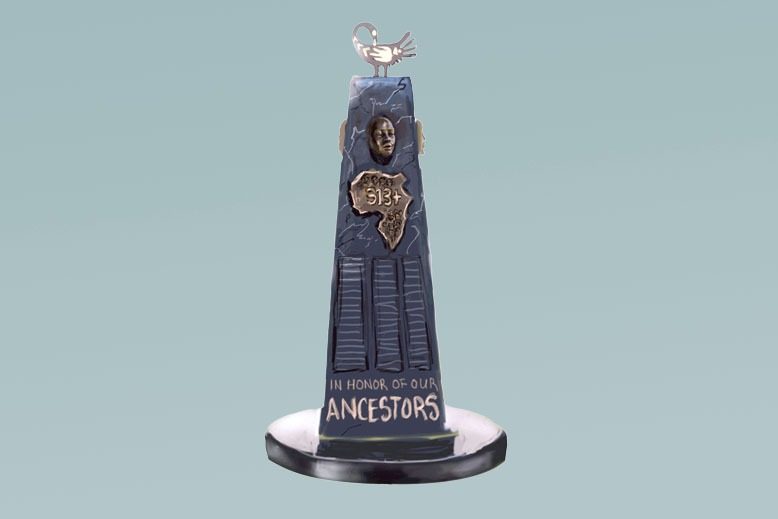
While there are about 40 known African American burial grounds around the state, many have been lost through lack of maintenance and record keeping.
That’s what happened to a swath of overlooked graves at the Siloam-Hope First Presbyterian Church in Elizabeth. This merged congregation combined three churches that date to the 1600s. Surviving historical documents were patchy, but recent research provided a clue that there were graves not accounted for on the cemetery map. What followed was the discovery of more than 313 unmarked graves of free and enslaved Africans. A rare ledger from the church confirmed the findings with entries like, “1798, Negro man of John Mulford,” and a listing in a property inventory for a person called Pompey, who died in March 1797. Sadly, these records were incomplete, with many of the dead unnamed.
Reverend Wanda Lundy, who has led the congregation since 2019, says she felt the presence of these ancestors on her first visit to the property. “They spoke to me,” she says of an intuition that guided her to park away from the building. Later she learned that parts of the parking lot covered unmarked graves of Africans. “This is the story of African people in this country,” Lundy says. “We have been disconnected from our history in so many ways.” With a sense of duty that could be described as divine, Lundy is ambitiously giving voice to these ancestors.
[RELATED: Visit These New Jersey Cemeteries For a Fascinating Walk Through History]
Annually on All Saints Day, Lundy leads a ceremony reading the names of the Africans. In 2020, she launched the Ancestors Speak 313+ project, to honor the lost dead with a 21-foot granite-and-bronze monument that will bear their names. “It will be tallest thing in the cemetery and will have a sankofa bird on top,” says Lundy, explaining that the bird honors the past, the present and the future.
Elizabeth officials have joined the charge to build the monument. Police chief Giacomo Sacca is an outspoken advocate and fundraiser for the project. He even assembled a volunteer group of officers to dig the memorial’s foundation last May.
Other 313+ initiatives include renaming Elizabeth’s Fast Ferry—which connects Elizabeth with lower Manhattan—the Elizabeth 313. As well, inscribed bricks that will frame the monument’s perimeter are for sale.
“Without us looking back, without us doing this research, we can’t move forward in a positive way,” says chief Sacca, an Elizabeth native.



